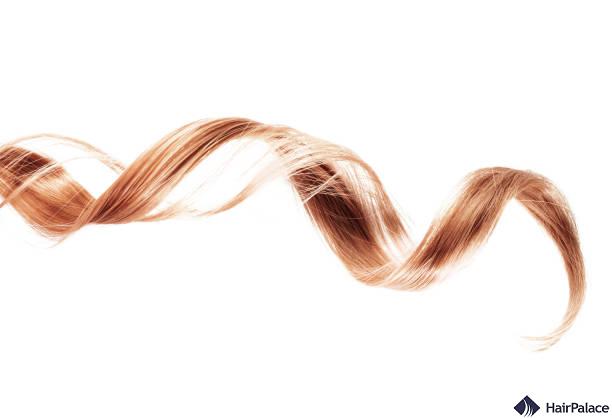About the Hair

Hair is partly about our health and overall well-being.
A balanced diet, regular exercise, getting enough sleep, and reducing stress can make our mane thicker and shinier.
However, certain medical conditions, stress, or even improper care can result in brittle, thinning hair.
Understanding the hair structure, type, and the mechanism of hair growth is essential to keep our hair healthy.
Besides, it can also enable you to notice the early signs of hair loss, allowing you to take the necessary down and, in some cases, stop the process.
Hair Types
Understanding your hair type is crucial to maintain a good hair care routine, just as knowing your skin type helps you choose the best cosmetics and moisturisers.
If you don’t know what to do and what not to do with your hair, you could damage your hair texture severely over time.
We have a quick, simple guide to help you identify your hair type and find the best way to care for it.
Structure
Whether your hair is curly or straight, blond or black, the hair structure is made of keratin, a protein also found in your skin and nails.
Every hair on your head grows out of the epidermis and comprises two core parts: hair follicle and the shaft.
The hair follicles are located underneath the skin and are responsible for sprouting new strands of hair.
The part of the hair that grows beyond the skin is the hair shaft — basically, the hair you can see on your scalp today.
Growth cycle
Your hair undergoes a constant cycle of growth and shedding.
This cycle consists of 4 stages, the anagen, catagen, telogen and exogen.
Each day we lose about 80 hairs as they reach the end of the exogen stage.
Then the follicle returns to the anagen stage and starts to grow a new hair strand.
The hair growth cycle will continue until something disrupts it, ultimately inhibiting or slowing the production of new hair.
About Hair FAQ
In mammals, hair’s primary purpose is to conserve body warmth and provide insulation against low temperatures. Varying colours and patterns found in hair can also serve as a form of camouflage to hide from predators, and may be important in sexual attraction.
When talking about hair, there are three key purposes to consider: sensory input, protection, and thermoregulation. Hair on the head, for instance, helps protect the scalp from sunlight and cold.
Keratin, a resilient protein, is one of the core building blocks of hair. Hairs grow from follicles within the skin, and a hair bulb at the base of each follicle creates hair shafts from divided cells.
Trichology is the branch of dermatology focused on hair and scalp health. Trichologists avidly research hair, and help patients with hair loss or scalp issues.
Hair begins to form in the womb around the 8th to 12th week of pregnancy. It grows from hair follicles, which are tiny structures in the skin that produce keratin, the protein that makes up each strand. Hair growth follows a cycle of three phases: anagen (growth), catagen (transition), and telogen (resting/shedding).
– The average human has about 100,000 to 150,000 hair follicles on the scalp.
– Hair is the second fastest-growing tissue in the human body, after bone marrow.
– A single strand of hair can support up to 100 grams in weight without breaking.
Last medically reviewed on May 20th, 2025
- What is the structure of hair and how does it growhttps://www.ncbi.nlm.nih.gov/books/NBK546248/
- Lippert H. Lehrbuch Anatomie. Munich: Urban und Fischer; 2017.
- Pschyrembel. Klinisches Wörterbuch. Berlin: De Gruyter; 2017.
- Buffoli B, Rinaldi F, Labanca M et al. The human hair: from anatomy to physiology. Int J Dermatol 2014;53: 331–341.
- Rushton DH. Nutritional factors and hair loss. Clin Exp Dermatol. 2002;27(5):396–404.https://pubmed.ncbi.nlm.nih.gov/12190640/
- Alonso L, et al. (2006). The hair cyclehttps://jcs.biologists.org/content/119/3/391
- Thom E. Stress and the Hair Growth Cycle: Cortisol-Induced Hair Growth Disruption. Journal of Drugs in Dermatology : JDD. 2016 Aug;15(8):1001-1004. PMID: 27538002.
- Raechele C. Gathers, Amy J. McMichael, Hair Disorders in Systemic Disease, Dermatological Signs of Internal Disease (Fourth Edition), 2009


